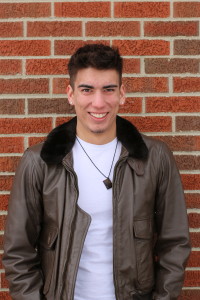
Name: Oscar O’Flaherty
Project Title: The Mathematics of Juggling
Major(s): Math and Economics
Year: Junior
Advisor: Jonathan Stadler
What is your project about?
This research project explores the mathematics of juggling. Specifically, the recurrence relations among siteswaps are examined. A siteswap is a list of numbers used to represent juggling patterns. There are three parameters for the siteswaps to be discussed: the length of the juggling pattern, the number of balls thrown, and the maximum height of the throws. The methodology I used included creating tables to help recognize patterns among siteswaps and comparing these patterns with the Online Encyclopedia of Integer Sequences (OEIS) to help understand recurrence relations and other fundamental combinatorial processes.
What was the research process?
Math is like one giant puzzle, and this project specifically involved combinatorics. We knew how the puzzle was supposed to work so it comes down to how the pieces fit together. It had nothing to do with the physics of juggling. I was mostly counting juggling patterns and working with equations made for juggling patterns. We were trying to break it down and figure out why it works. That’s a big thing in math because they always want proof of why and how things work the way they do.
What kind of results did you obtain?
We figured out ground state pattern, which consists of being in one juggling pattern and switching to a new one. In the excited state, which we haven’t figured out yet, a transition throw is involved in the switch from one pattern to another.
What was the experience like?
It was great and it was a fun time, because over the summer Dr. Stephanie Wilson took us out to a Shakespeare play and a few times to lunch. Dr. Stadler is always fun to work with, too. He is always energetic and is really a good guy to work with. I like math because it’s all about figuring out puzzles, and so it was enjoyable and challenging. It was all done mostly through trial and error.
Name: Ariel Webb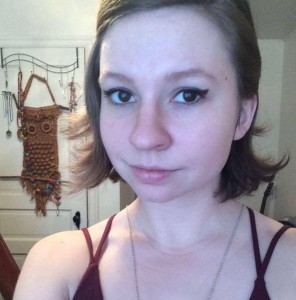
Project Title: Towards Integrity: Pierre Hadot and Re-Conceiving Ethics Education
Major: Philosophy
Year: Senior
Advisor: Nate Jackson
What is your project about?
It’s about how ethics education should include an aspect of practice to the coursework. I feel like the current system of philosophy education is really focused on theory, but it needs more emphasis on the nature of ethical knowledge. I am arguing that ethical knowledge requires an aspect of integrity. I want to make philosophy education not only learning about different theories, but for students to practice what they’re learning, too. I drew mostly off of Pierre Hadot’s work for this project.
How did you conduct the research?
It originated from my senior thesis paper that is a requirement for philosophy majors. It consisted of a lot of reading, mainly Hadot. It also involved a lot of thinking through the readings and forming an argument. I then proposed a solution for a way that practice can be incorporated into ethics education.
What is your proposed solution?
I think theory and practice need to go alongside each other in ethics education. In my model of education, they can teach the theory but as they need to provide a corresponding project where the student has to go out and try it in practice. For example, if an ethics class is reading Peter Singer and his work on ethics of vegetarianism, students would have to go out and practice vegetarianism to more fully understand it.
What kind of results do you hope to see from this project?
As per requirement, I presented to the Philosophy Department. I would hope they would all adopt the practice aspect of ethics education, especially since some professors already have. I hope it becomes more common in the philosophy curriculum. My advisor, Dr. Jackson, is doing something similar to this model in his ethics class.
How was the experience?
It has been life-consuming but it’s a lot of different things as well. It has been stressful but fun. Sometimes I really enjoy it and other times it can be overwhelming. Overall, it was very fulfilling as a major project in my collegiate career.
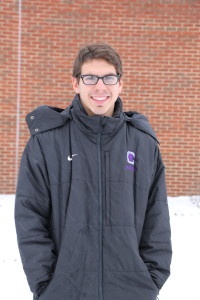
Name: Kevin Fikar
Major(s): Public Relations and Electronic Media and Film
Year: Senior
Project Title: Stars Indoor Sports Campaign
Advisor: Dr. Lois Foreman-Wernet
What is your project about?
I ran a campaign for Stars Indoor Sports, a local indoor facility in Columbus. I ran the campaign by using and making promotional videos. I used the five-step Yale model.
How did you conduct the project?
I had to film four categories that consisted of the Stars’ business, bar, adult soccer league (which included a bubble ball league), and The Little Kickers youth league. I worked closely with the general manager and made promotional videos for each of those categories. It started out as a film project that related to a Public Relations paper. Then I tied in the five-step Yale model to the project.
What kind of results came from this project?
I ended up profiting the company $3,000. I took the videos and put them on Youtube and gave Stars a hard copy. I also took it to different events in Columbus like Red, White and Boom as well as the Columbus Zoo. It sparked interest for people who eventually joined the adult league. The bubble ball league took off as well.
Why did you conduct this project?
I needed a Capstone project and I was officiating indoor soccer one night. I know the Operations Manager there and he told me they needed to bring in more teams. That’s when I sparked the idea to make these promotional videos.
What was your experience like?
It was stressful. It was a project that hangs over your head over the course of the semester, but it was a good educational experience. It was cool and nice to be able to give back to the community and get out there to prove I can do it. I was able to take everything I learned in my four years and apply it to the outside world. I got a lot of help from my advisors. The hardest part was filming and getting the right shots.
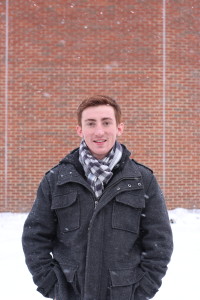
Name: Christopher Hines
Project Title: Kodály: The Keynote to Better Brass Playing
Major: Music Education
Year: Junior
Advisor: Dr. Tom Zugger
What is your project about?
My trip to Hungary didn’t start as a research project, but I started learning about the Kodály Method during my time there. It’s a teaching method used frequently out there. I realized it was used mostly for vocal performance, but its concepts could apply to instrumental performance as well. The goal was to figure out how this method of music education works and apply it to instrumental music education.
What was research process like?
A lot of the classroom work on the Kodály Method was involved. I got a lot of information while I was in school in Budapest. I observed music lessons of Hungarian students learning through this method. I took videos and notes of the lessons, and with my own private lesson teacher I saw how his students responded and it was unbelievable how the method could be used. Therefore, most of the research came through classroom work and observation of instrumentals while I studied abroad in Hungary.
What lead you to go abroad to Hungary?
Capital has a couple sisterships with schools abroad. Through this program I found the Kodály internship, which was located outside of Budapest, Hungary. I applied and got accepted and spent the previous semester over there and the credits transferred. It was a great opportunity to travel and learn in a different place that then evolved into researching that topic.
What has the experience been like?
It’s all happened really fast for me. I knew I was doing research on the Kodály Method and I thought ‘Why not submit a proposal to NCUR?’ My proposal got accepted and here I am.
What kind of results did you find?
Students in Hungary are trained from age six about the fine details of music. They receive music theory training from the time they’re in elementary school on. All the training occurs before they are even handed an instrument. In American instrumental performance education, there is a huge disconnect between what you’re doing and what you’re supposed to be doing. But in Hungary, they don’t have that. They’re better prepared and consequently excel at a higher rate. In a perfect world, I wish America could see how much better music education would be by adopting the Kodály Method. For the current time, I hope to prove to some people that this is a superior method.
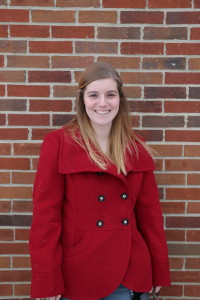
Leah Marty
Project Title: The Theory of the Uncanny and Casa Tomada
Major: Psychology and Spanish
Year: Junior
Advisor: Stephanie Saunders
What is your project about?
I read Sigmund Freud’s theory about the uncanny, which deals with why certain things in the world can begin to feel strange and create an environment that is seen as unnatural. I took what he said about the environment and applied it to the short story Casa Tomada by Julio Cortázar. I explained how Cortázar created the environment and how Freud’s theory applied to the literature.
How did you conduct the research?
A lot of the research was figuring out the environment that Freud was coming from and how that formed his theories. Then I researched the background of Cortázar and how it related to his writing of the short story. The Freud theory was in English, but the short story was written in Spanish, so I had to work with both languages at the same time. It was particularly interesting considering that Cortázar was Argentinean, but Freud’s theory still had an effect on the world at his time.
What results did you find?
Ultimately the main goal was that everyone usually writes Freud off quickly. In doing this project, it proved that a lot of what he had to say could be applied in many circumstances. It showed people can learn from his theories and writings and apply them to life.
What was the experience like?
Doing the project was a lot of work as I was meticulously going through the research and writings. It was worth it, though, and I really enjoyed doing the project.
Autumn Laws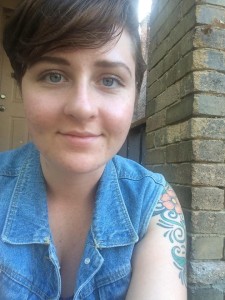
Project Title: An Infinite Work of Art: A Possible Solution to Digital Fiction’s Flaws
Major: Professional Writing
Year: Senior
Advisor: Kevin Griffith and Sergey Rybas
What is your project about?
My project is a look at digital fiction, which relies on hypertext and a non-linear style of navigating through literature. My project challenges the idea that fiction is finite. I am doing this because the way things currently are with digital fiction, theoretically it can mostly all be published on paper. This is a weakness of digital fiction, because it doesn’t utilizing the opportunity to have content uploaded by readers. In a way this is challenging not just digital fiction but also fiction.
How did you go about conducting the research?
I had the idea of it about a year ago. I have all my own writings that can be loosely connected into a non-linear narrative. And when I connected it, the writing was making more of a web than a traditional story structure. And that got me thinking about how story happens, particularly if it all needs to happen at once. But my writing didn’t feel finished. That’s when I got the idea for readers to add things to the writing. This could change how I and other writers create fiction, as it would be in the hands of the readers.
What kind of results did you find?
What I want it to do is to challenge what we understand to be literature. I want it to revolutionize what we think of as the canon. In a sense, it’s a commentary. We can’t learn infinite amounts of fiction and writing. That being said, there is a set canon that we are taught consistently, but does that delegitimize other writings? I want to put a mirror up to the way writing happens.
What was the experience like?
It’s been really surreal. It’s also been disheartening because if this project were to happen, I would never see the end of it. But the theory of it is that it is supposed to be unfinished. If it is put in motion as I idealize it, I’ll die before it stops.
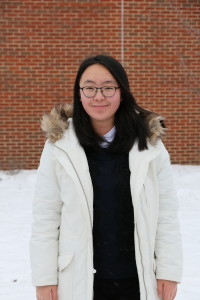
Name: Wenxin Guan
Major: Piano Performance
Project Title: Playing Bach Responsibly: Exploring Historically Informed Performance Practice of the Well-Tempered Clavier
Advisor: Tianshu Wang
What is your project about?
It’s about a historically-informed piano performance which requires research and a lot of listening. There is quite a bit of time gap between Bach and today’s performers. There are articles written by composers about the conventions of their style and how it relates to what we think is acceptable for the music of that time period. I wanted to touch base with the boundary between personal creative interpretation of a piece versus a historically-informed and stylistically accurate performance while maintaining the performance in the arts.
How did you conduct the research process?
I conducted a listening survey that involved video recording of performances with different playing styles. I revolved around comparing multiple artists performing pieces from the same composer, Johann Sebastian Bach.
Why did you take on this project?
I like this composer very much. For most Chinese pianists, the interpretation of this composer is controversial. It depends on the level of how informed a school of musicians are and identifying the key components of interpreting this composers music. Especially with the use of the modern version of a keyboard unit, it can alter how you can be expressive and still stay true to the composer’s intention.
What’s the experience been like?
It is exciting and kind of difficult. It required me to do a lot of research into many pianists and musicians and their interviews, portfolios, and articles. The most difficult part was talking to people, as English is not my first language.
What does this accomplishment mean as an artist yourself?
I believe that as an artist, especially being from a foreign culture, one needs to be informed as much as we can. We can do this by reading literature to be a culturally-informed person. In this way it is possible to be ethical as an artist and to be responsible as a performer.
Name: Rachel Arnold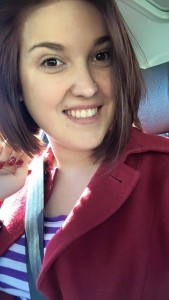
Project Title: The Role of Emotional Stability as a Moderator for the Physiological Stress Response to Bias
Major: Psychology
Year: Junior
Advisor: Andrea Karkowski
What is your project about?
My research investigates how personality and emotional stability moderates our body’s stress response to bias. I’m measuring salivary cortisol, blood pressure, heart rate, and GSR (sweat gland activity) as well as a variety of personality inventories.
How did you conduct your research?
I am just beginning the data collection process, but I received the Boyd Fund to purchase salivary cortisol testing kits. Participants will take base-line physiological measures and answer demographic information. They will then be asked to listen to a series of vignettes that depict experiencing bias. After listening to these vignettes, physiological measures are taken once more in order see if the vignettes caused a biological response.
What kind of results do you hope to find?
I hypothesize that the more emotionally-stable a person is, the more subdued their stress-response will be. My hypothesis is that individuals of intersecting identities will have a heightened stress response to the bias vignettes.
What has the experience been like so far?
It’s been fantastic. It has made me really excited about research. Dr. Karkowski has amazingly supportive every step of the way and keeps my ideas grounded in reality. I’ve also worked with Dr. Heym in the Biology Department for the “hard science” pieces and I couldn’t pull this off without her kindness. It’s been intense but I am loving every moment.
Name: Maura Fortino
Project Title: Analyzing the Rock the Vote Campaign: Is Rock the Vote Putting On a Campaign It Says It is?
Major: Public Relations
Year: Senior
Advisor: Lois Foreman-Wernet
What is your project about?
I did an analysis on the Rock the Vote campaign. Rock the Vote is a campaign that focuses on getting young voters, ages 18-25, out to vote in the political elections and issues. I analyzed whether the campaign was successful or not. What I discovered was they did some things well and others, not so much. I discovered that it was not a successful campaign, and so I came up with suggestions with things they could be doing to better the campaign that they aren’t currently doing.
What kind of research process did you use?
I did it in the spring of last year with the Capstone project related to my major. In the spring of ‘14 I did an analysis on a public relations crisis. I wanted to broaden my range, and I’ve always been interested in politics. So I decided to do something with a political campaign. I thought Rock the Vote was successful, but found out otherwise. I went to Dr. Lois and set a week-by-week plan to get the research, methodology, etc., done on time.
What kind of results did you find?
What I found was in two of the five stages Rock the Vote did well, the identification and legitimacy stages. They did okay in the participation stage. They did not do so well with the distribution and penetration stages. I always thought it was a well-known campaign. I conducted a survey among Capital students and a lot of them had not heard of Rock the Vote before.
What was the experience like?
The semester that I researched was stressful at the end, but the beginning was fine as I stuck with the schedule I established with Dr. Lois. I was finding new information and struggling to fit everything together at the end. Then this past fall semester I presented to the Communications Department, and it went well.
